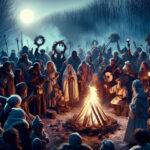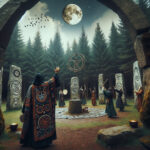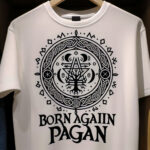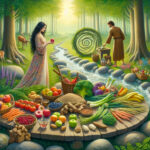Norse Paganism is an ancient belief system that was practiced by the people of Northern Europe and Scandinavia prior to the spread of Christianity in the region. It is often referred to as Norse mythology or Viking mythology, and is closely related to other pre-Christian religions such as Celtic, Germanic and Anglo-Saxon Paganism. Norse Paganism is a polytheistic religion that revolved around the gods and goddesses of Norse mythology, and centered around the concept of fate, honor and courage. In this article, we will explore the history, beliefs and practices of Norse Paganism.
Norse paganism was an ancient religion practiced by the Scandinavians during the Viking Age (c. 793–1066 CE). It was a polytheistic religion, meaning that its adherents believed in multiple gods and goddesses. The two main gods were Odin, the god of war and wisdom, and Thor, the god of thunder and strength. Other important gods included Freyja, the goddess of love and fertility, and Frey, the god of fertility and prosperity. Norse paganism also included beliefs in giants, elves, dwarves, and other supernatural entities.
Norse Mythology
Norse mythology is the body of stories and beliefs associated with the gods and goddesses of Norse paganism. These stories form the basis of the modern understanding of Norse mythology and provide insight into the values and beliefs of the ancient Scandinavians. Some of the most common stories involve Odin, Thor, Loki, and Freyja. These stories tell of their adventures and battles against giants, trolls, and other mythical creatures.
Rituals and Practices
Norse paganism was an oral tradition, with its rituals and practices passed down through generations. Offerings and sacrifices were made to the gods in order to obtain their favor. Offerings of food, drink, and animals were common. Sacrifices of humans were occasionally practiced, but were rare and usually only done in extreme circumstances such as times of war or famine.
Divination was also practiced, usually in the form of seidr, a form of fortune-telling. Diviners would use a variety of methods to attempt to predict the future, including casting runes, interpreting dreams, and interpreting omens.
Symbols and Art
Norse paganism was a visual religion, with its adherents adorning their homes and clothing with symbols of their gods and the stories associated with them. Symbols such as the hammer of Thor, the Valknut, and the Yggdrasil tree were commonly used.
Norse art was also heavily influenced by pagan beliefs. Intricate designs featuring animals, mythical creatures, and gods were used to decorate weapons, jewelry, and other everyday items.
Legacy
Norse paganism has had a lasting impact on modern culture, particularly in Northern Europe. Many of the gods and goddesses of Norse paganism have become popular figures in modern literature, television, and film. The religion’s symbols and stories continue to be used in modern art, music, and fashion.
Norse paganism also had a profound influence on the development of modern religions. Many of the gods and goddesses were incorporated into the Christian pantheon and their stories were used to teach Christian values. The Norse concept of the afterlife was also adapted into Christian beliefs.
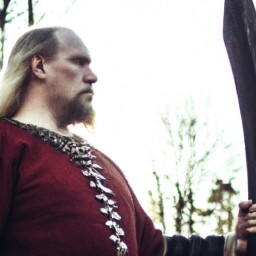
The Norse Pagan religion is an ancient spiritual tradition that has been passed down through generations. It is a belief system that values honor, respect, and strength. Its myths and stories provide a unique perspective on the world and a way to connect with the divine. Norse Paganism is a powerful and vibrant religion that continues to be practiced today. It is a way of life that encourages its practitioners to live in harmony with nature and to honor their ancestors. It is a beautiful and meaningful spiritual path that can bring a sense of peace and joy to those who follow it.


